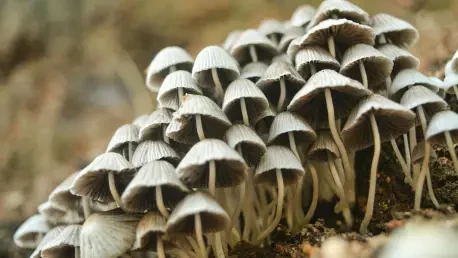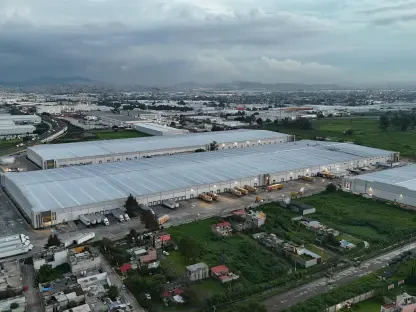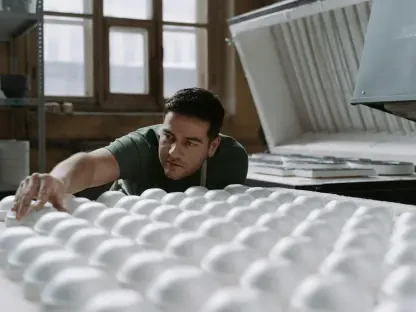In recent years, the quest for sustainable materials has been intensifying, driven by the urgent need to reduce reliance on non-biodegradable substances like plastics. Amidst this pursuit, mushroom genetics has emerged as a promising field that could potentially revolutionize the production of eco-friendly materials. Researchers have been exploring ways to harness the inherent properties of mushrooms, particularly the split gill species, to produce biodegradable materials with tailored characteristics. By tapping into the genetic diversity within these fungi, scientists aim to overcome longstanding challenges associated with inconsistency in mushroom-based materials, offering new pathways for sustainable material innovation.
Exploring Mushroom Genetics
Natural Genetic Diversity’s Role in Material Innovation
The extraordinary genetic diversity inherent in mushrooms offers a unique opportunity for innovation in the field of sustainable materials. Mushrooms like the split gill species exhibit a remarkable ability to interbreed across over 23,000 mating types, presenting a vast genetic landscape for experimentation. This diversity allows researchers to manipulate genetic combinations, leading to customizable material properties such as enhanced strength, flexibility, and water resistance. By exploiting this natural variation, researchers aim to develop biodegradable alternatives to conventional materials, accommodating the specific needs of different industries while aligning with environmental sustainability goals.
Breeding and Germplasm Development
Breeding mushrooms from distinct global locations—Ecuador, Mexico, Massachusetts, and Russia—has led to the creation of novel germplasm with diverse genetic profiles. These germplasm encompass unique combinations of nuclear and mitochondrial DNA, resulting in varied material attributes. By methodically breeding these strains, scientists can produce an extensive range of mushroom-based materials, each offering different qualities suited for specific applications. This approach not only addresses the inherent inconsistency in materials but also opens new avenues for innovation in material design, leveraging genetic potential to meet industry-specific standards.
Chemical Processing and Material Analysis
The Impact of Chemical Treatments on Material Properties
Chemical processing plays a pivotal role in determining the final characteristics of mushroom-based materials. Researchers have used chemical agents like polyethylene glycol and glycerol to alter the strength and flexibility of the mycelial networks. This chemical treatment transforms the inherently inconsistent materials into films displaying a wide array of properties. By selectively applying these processing techniques, scientists can ensure that the materials produced meet stringent requirements, catering to a variety of industrial applications, from packaging to textiles.
Advanced Analytical Techniques in Structural Analysis
To understand the varied responses of mushroom strains to chemical treatments, researchers have employed sophisticated analytical techniques. Fourier-transform infrared spectroscopy and other methods have provided insights into the molecular structures of mushroom strains, focusing on essential structural elements like proteins, sugars, chitin, and beta-glucans. This detailed analysis elucidates how specific genetic combinations influence the materials’ characteristics, guiding the development of optimized processing methods that enhance desired properties. Comprehensive analysis thus serves as a critical component in advancing the practical applicability of these materials.
Future Implications and Industrial Applications
Potential for Revolutionizing the Material Industry
The innovative approach of using mushroom genetics for material production holds transformative potential for several industries. By moving away from standardization towards harnessing natural genetic diversity, manufacturers can create materials that are environmentally friendly and tailored to specific needs. As this method gains traction, it is expected to drive substantial changes in manufacturing processes, potentially replacing traditional materials with alternatives that are not only sustainable but also offer customized performance attributes. This paradigm shift could redefine material production, leading to advancements that prioritize ecological preservation and efficient resource use.
Challenges and Opportunities in Scaling Production
Despite the promising outlook, challenges remain in scaling the production of mushroom-based materials to meet industrial demands. The complexity of genetic manipulation and precise chemical processing presents obstacles that require further research and technological advancements. Moreover, the need for tailored solutions necessitates the development of strategic frameworks for integration into existing industrial ecosystems. Addressing these challenges presents an opportunity for innovation, as solutions to these issues can set new standards for sustainable production, ultimately fostering widespread adoption of mushroom-derived materials in diverse sectors.
Concluding Insights
In recent times, the drive toward sustainable materials has gained significant momentum, largely due to the pressing necessity to lessen our dependence on non-biodegradable products such as plastics. In this landscape, the field of mushroom genetics has arisen as a promising solution that could fundamentally transform the production of environmentally friendly materials. Researchers are delving into how to utilize the unique properties of mushrooms, with a particular focus on the split gill species, to develop biodegradable materials that can be customized to fit specific needs. By exploring the genetic diversity inherent in these fungi, scientists are working to address and resolve persistent issues like the inconsistency often found in mushroom-based materials. This approach opens up groundbreaking opportunities for sustainable innovation in material production, potentially paving the way for a future where eco-friendly alternatives become commonplace, helping to minimize environmental impacts.









